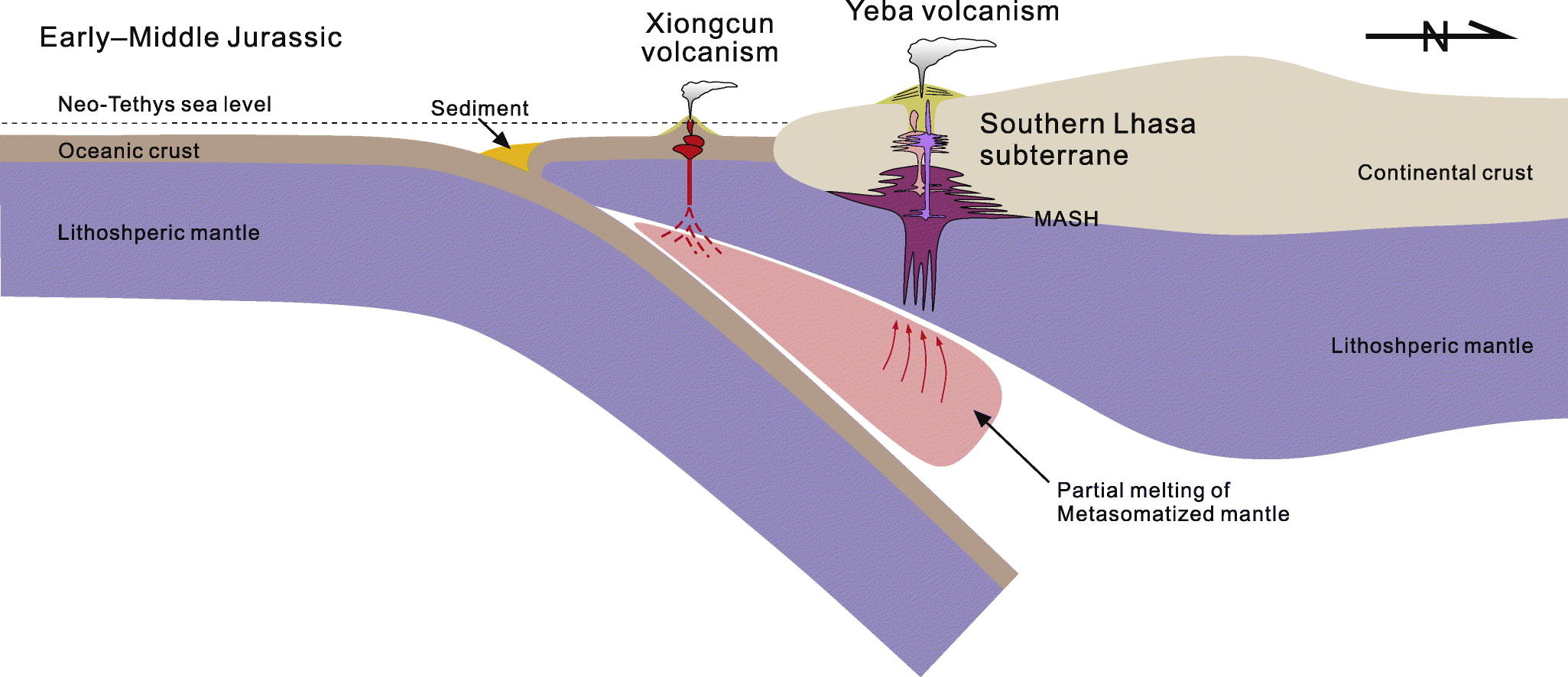Early Jurassic volcanic rocks in the Xiongcun district, southern Lhasa subterrane, Tibet: Implications for the tectono-magmatic events associated with the early evolution of the Neo-Tethys Ocean
Abstract:
Early Mesozoic (Late Triassic to Middle Jurassic) igneous rocks in the southern Lhasa subterrane, Tibet, record important information on the early tectono-magmatic evolution of the Neo-Tethys Ocean. This paper presents petrological, geochronological, and geochemical data for the Xiongcun Formation ignimbrites, to constrain the petrogenesis and tectonic setting of these rocks in the southern Lhasa subterrane. The Xiongcun Formation is dominated by andesitic and dacitic rocks. These rocks yield Early Jurassic (195–176?Ma) zircon UPb ages and display typical arc-like geochemical signatures, being enriched in large-ion lithophile elements (e.g., Rb, Ba, and U) and depleted in high-field-strength elements (e.g., Nb, Ta, and Ti). Sr–Nd–Pb–Hf isotopic compositions are highly depleted. These chemical and isotopic data suggest that the Xiongcun Formation ignimbrites probably formed in an intra-oceanic island arc setting related to the northward subduction of the Neo-Tethys oceanic slab. The parental magmas were derived from a depleted mantle source modified by fluids released from the Neo-Tethys oceanic slab. Combined with previously reported data, we suggest that the volcanic rocks in the Early Jurassic Xiongcun and Yeba formations of the southern Lhasa subterrane were generated by a single subduction system, but developed on oceanic and continental crust, respectively.

Keywords:
Xiongcun Formation; Intra-oceanic island arc; Early Jurassic; Neo-Tethys; Lhasa terrane
.png)